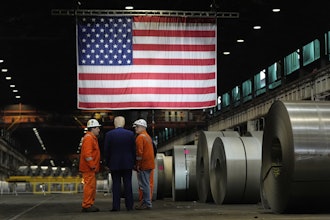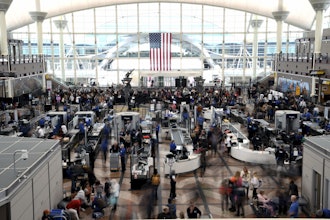Winter is here, and while some of our favorite holidays and traditions have passed, winter threats have not. Harsh winter conditions, especially hazardous seasonal conditions, may affect those of us in the manufacturing sector. Slushy, icy weather causes slips, trips, falls and vehicle accidents can occur and absences due to common winter illnesses like colds and the flu can also impact production.
Which companies are most at risk? Workers in the production, transportation and material moving sector have the highest rate of missed work as a result of illness and injuries and carries the second-highest workers’ compensation cost. And even if your worksite isn’t located in a snow-prone area, your workers could still be susceptible to falls and other accidents this time of year. Reduced blood circulation and sensation in the toes can make it more difficult to maintain balance. Fewer daylight hours and cold weather can also zap energy and lead to decreased focus levels.
Fortunately, employers can get a head start on preparing for what the worst of winter has to offer — if they start today.
Winter Arrives Quickly — Make Sure You Move Just as Fast
In areas where winters are especially tough, seasonal safety precautions must start early. The first snowy day — or first slip-and-fall — is too late. Slips, trips and falls are the leading cause of workplace fatalities; they also cause over 20 percent of disabling workplace injuries and lead to an average of eight days of missed work.
Take these steps to avoid accidents at your worksite:
- Identify potential slip, trip and fall sites. Start by looking for uneven surfaces, standing water and metal or low-traction flooring. Review past incident reports of frequent or repeated accidents. Address potentially dangerous sites as quickly as possible, and consider limiting access to areas that can’t be resolved.
- Examine lighting conditions and identify low-visibility areas. Improve poor lighting conditions whenever possible. If they can’t be remedied right away, consider posting notices that alert employees.
- Establish a policy for snow and ice removal in accident prone areas. Make sure maintenance personnel understand the policy and are equipped with the proper resources (shovels, snowblowers, etc.) Use guidelines such as the ones provided by OSHA to protect workers during snow and ice removal.
- Set expectations for clean up. Ensure that employees know they must clean up spills immediately.
Winter Safety Starts on the Front Line
Employee education is an equally critical component to ensuring a safe workplace in the winter. All employees should know and understand the seasonal risks. Consider a training program or dedicated safety meeting to share tips like:
- Keep your eyes on the path, not on your phone. Your phone may be a useful tool on the job, but it’s also a cause of distraction. And in snowy or icy conditions, it’s all too easy to lose your footing, even if your eyes aren’t glued to the screen. Consider making it mandatory for employees to only use phones when they’re stationary during winter.
- Dress for safety, not just the weather. Provide a list of dos and don’ts for winter wear. Remind employees that bulky coats, scarves and gloves can get caught in machinery and cause devastating injuries. If they wear hoodies, make sure the drawstrings are tucked safely away. Encourage — or mandate — wearing non-skid footwear, and, of course, all employer-issued safety wear.
- Don’t cut corners where safety is concerned. We all want to take shortcuts when performing routine tasks. But in winter, shortcuts can lead to serious injuries. Remind your workers not to climb ladders without double-checking they’re properly secured or walk through areas that may be wet or icy. Also, consider making it a policy that workers shouldn’t carry loads they can’t see over.
- Beat the seasonal slump. Encourage employees to stay active and continue healthy habits during these months when many of us tend to exercise less (which could lead to muscle strength loss and lack of flexibility) and preventable illnesses like the cold are more prevalent.
Create a Culture of Safety
According to OSHA, employers pay approximately $1 billion per week solely for direct workers’ compensation, medical expenses and costs for legal services. This does not exclude indirect costs such as the fees required to train new employees, accident investigation and expenses toward new machinery and property.
Despite this, the positive impacts stemming from safety standards transcend costs and trickle into the morale of your employees. Incident reports are not only represented in numbers, but in a worker’s ability to perform well because they feel secure in a sound organization - which continually applies safety standards in their everyday routine. Additionally, the way you protect employees is sure to have a ripple effect on recruiting and retaining effectiveness. With online review sites, your company is an open book to prospective job seekers and what better way to tell your brand story than through the authentic voice of your satisfied employees.
By making safety a priority for everyone, from the factory floor to the C-suite, you’ll create a company culture that values safe conditions and behaviors above all. But remember, a culture of safety doesn’t just help your business avoid costly financial and production losses. It also reminds your employees that their health, happiness and career success are valued at the highest levels of the organization.
There’s no time like the present to implement these measures. They may take time and money, but they’ll begin paying dividends almost immediately.
Corey Berghoefer is Senior Vice President of Risk Management & Insurance at Randstad US.






















